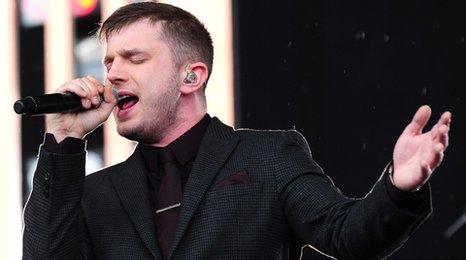Skinhead to raves: Gavin Watson's 1980s photos to feature in new play
- Published

Raves took place in and around High Wycombe in 1989 - some outdoors and unlicensed in places such as Hazelmere, others in licensed venues including The Centre in Slough
A photographer's pictures of the skinhead and rave scenes in and around his hometown are to form the basis of a new play about British youth tribes.
Gavin Watson's images from the 1980s record his own journey from one scene to the other.
"Replacing the skinhead scene with raves opened our minds - the world became a bigger place," said Watson.
Theatre director Harry Burton said the "authenticity" in the photos could translate into a story.
Watson, 54, photographed the skinhead scene in his native High Wycombe, Buckinghamshire, and then moved on to snapping the unlicensed rave scene at the end of the decade.
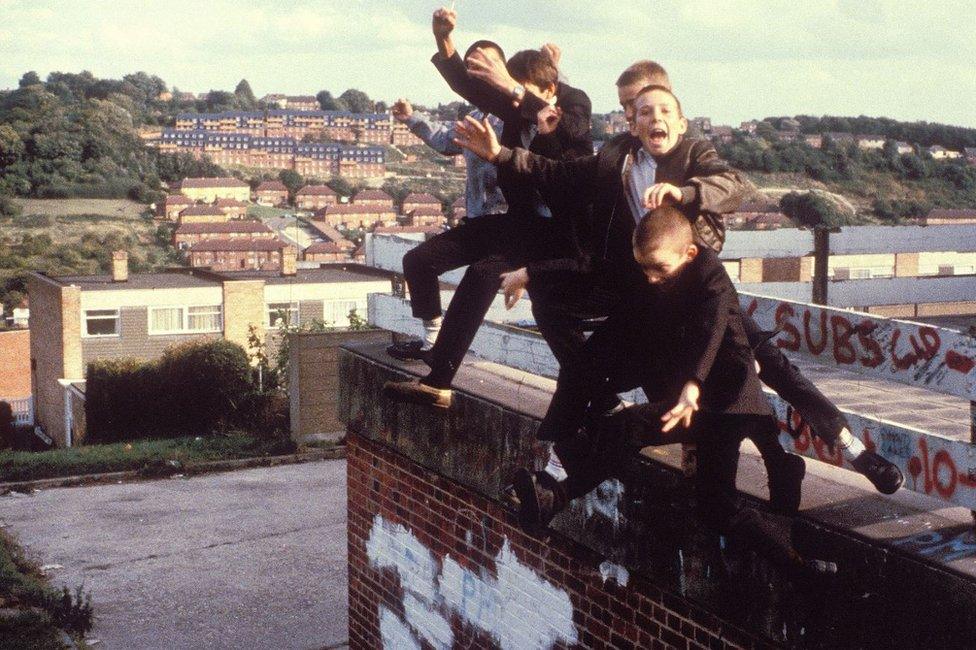
"This was way before parkour," said Watson, whose photographs from the early 1980s onwards have been collected in books including Skins and Just Kids
The photos have been published in books including Skins and Raving '89.
Having been a "skin" for about 10 years, Watson said: "It was always a classic look and I never got bored of it, but it was becoming stale and all about pubs. It was an older scene and wasn't gaining new blood."
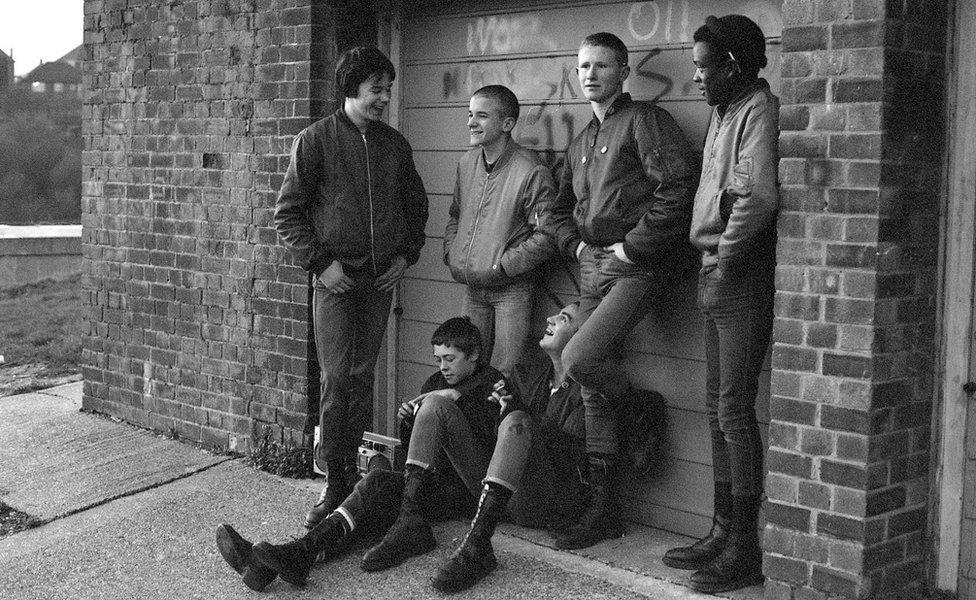
Skinheads on the Micklefield estate in High Wycombe, where London-born Watson grew up
Burton, 58, hopes the photographs can be incorporated into the as-yet-unnamed theatre production.
"I was as wary of skinheads as most middle-class kids, but I was always switched on to ska and reggae - music was the link for me," said Burton, probably best known for his Channel 4 documentary Working with Pinter.
"I'm a great admirer of the spirit of Gavin's work and the authenticity - the natural talent that he brought, his eye, the moment, the group, the feeling of family, the unforced nature of it.
"The scene that Gavin photographed was a million miles from the cliché of racist, Nazi skinheads - his gang had black kids in it."
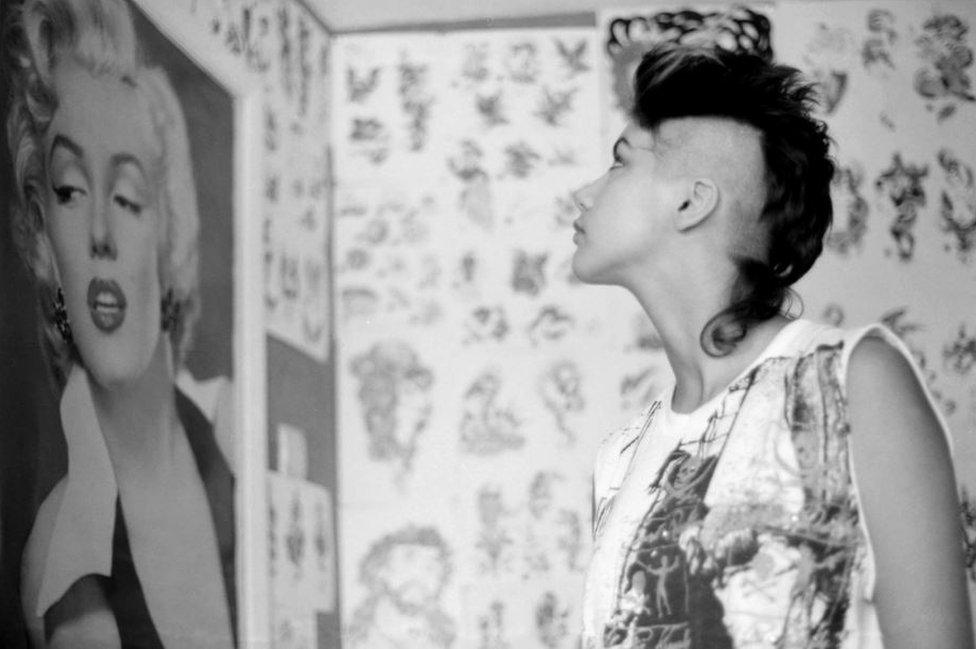
Watson, who used a Nikon FM 35mm camera, also photographed those who adopted the punk/Oi! look in the early 1980s "mainly in black and white, because colour processing was too expensive"
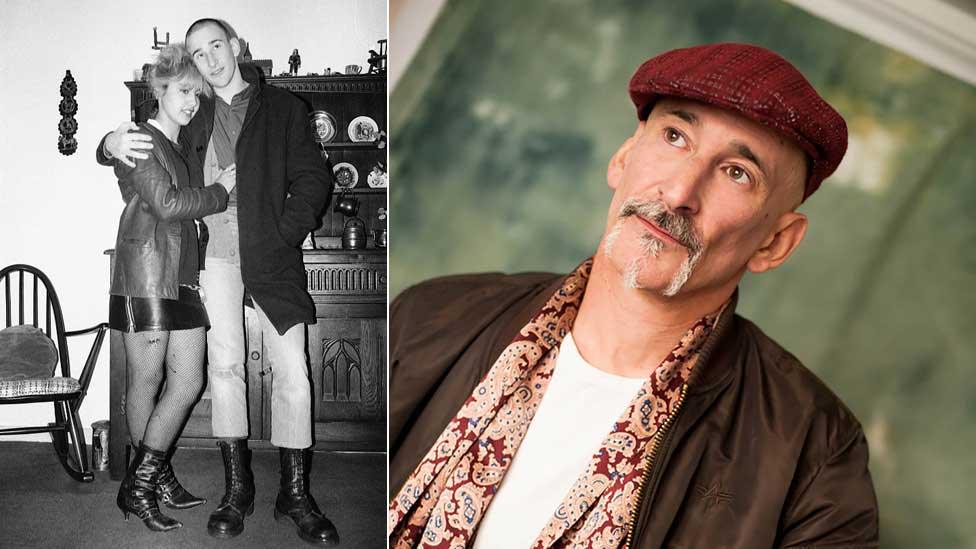
The photographer (pictured in the early 1980s and more recently) was a skinhead for 10 years before moving on to the rave scene
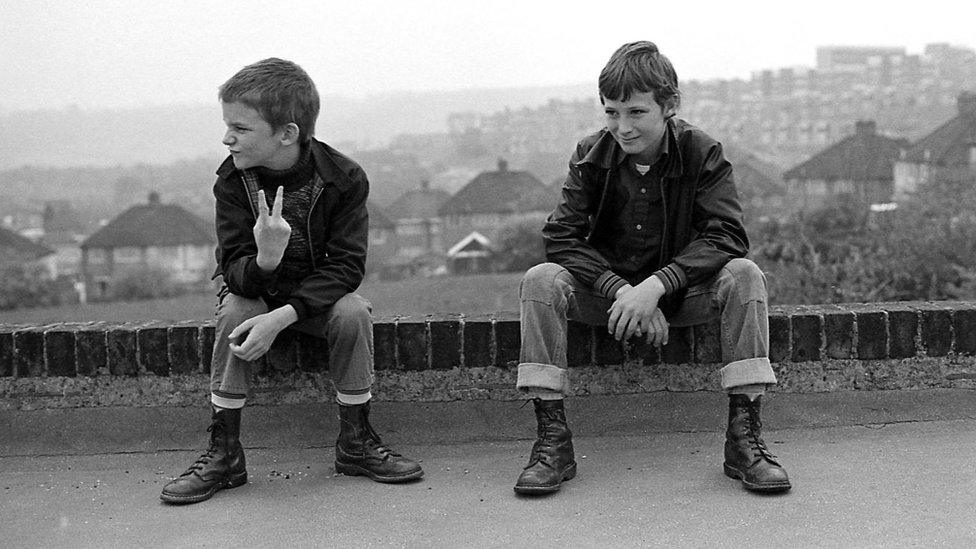
Watson's younger brother Nev (left) was also converted to the rave scene after years as a skinhead
Watson said he was attending raves virtually every weekend in 1989, and he has been using lockdown to put together a new collection, this time mostly in colour, called Raving Too.
You may also like:
"What the rave scene did was wash the gang mentality away: the football tribes, the goths, skins, soul boys etc.," he said.
"I'm in my 50s and a grandfather, so I'm out of it all now, but it seems to me rave was the last big change of any pop cultural significance where something goes mainstream and everyone, not just youngsters, is aware of it.
"I want the play to be more universal and symbolic - I don't want it to be 100% about me. I don't want to watch my mistakes on stage."
Burton said: "We think it's a one-man show and we're trying to create a story that has that mythological quality to it - there's a story to be told about that time that includes music, fashion, politics and rebellion."
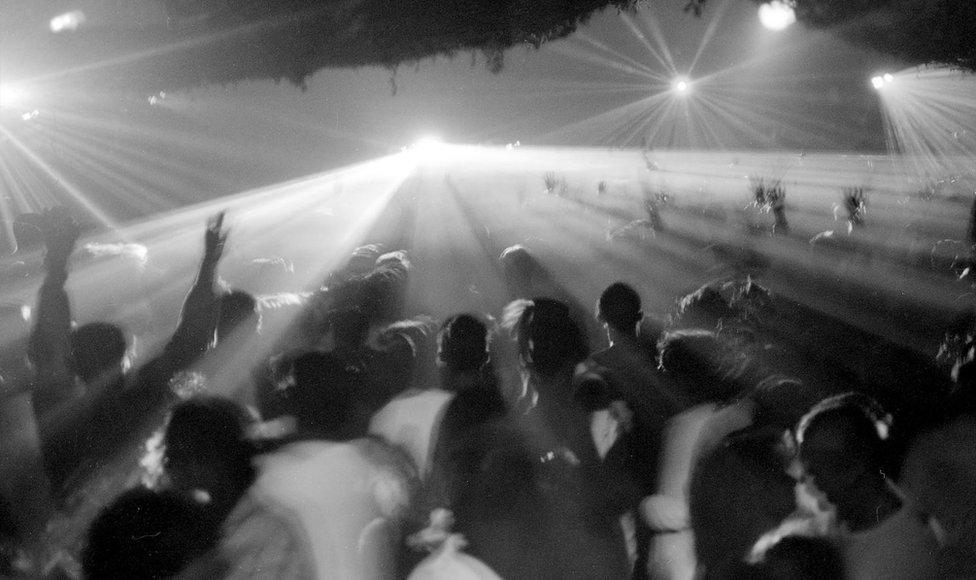
An outdoor rave in the Terriers area of High Wycombe, 1989. "There were no labels, no stars and no materialism - it was just people wanting a good time and feeling a bit rebellious," said Watson
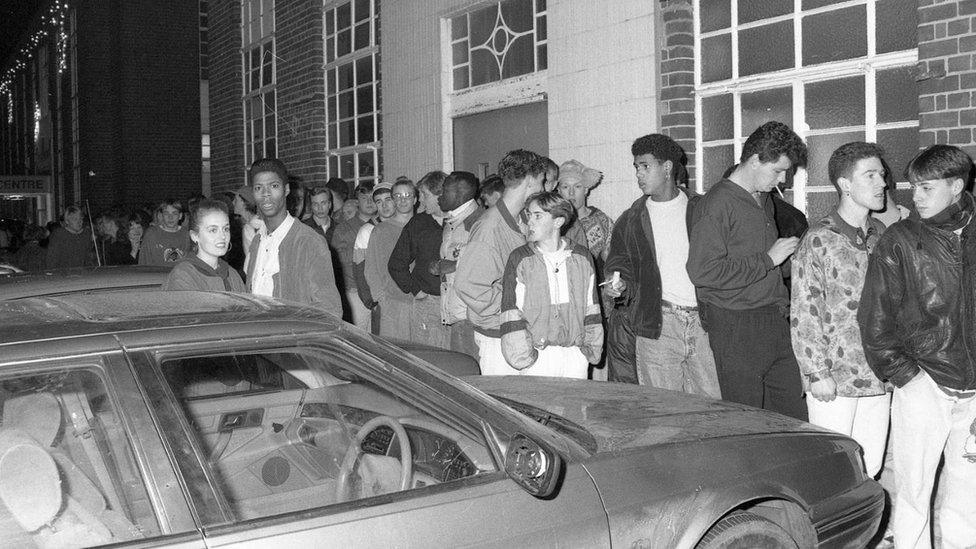
Queuing to get into The Centre in Slough, Berkshire. "Some people were suspicious - everyone thought someone else might be an undercover copper in those days - but I'd been a skinhead for 10 years, so I wasn't worried about what people thought," said Watson
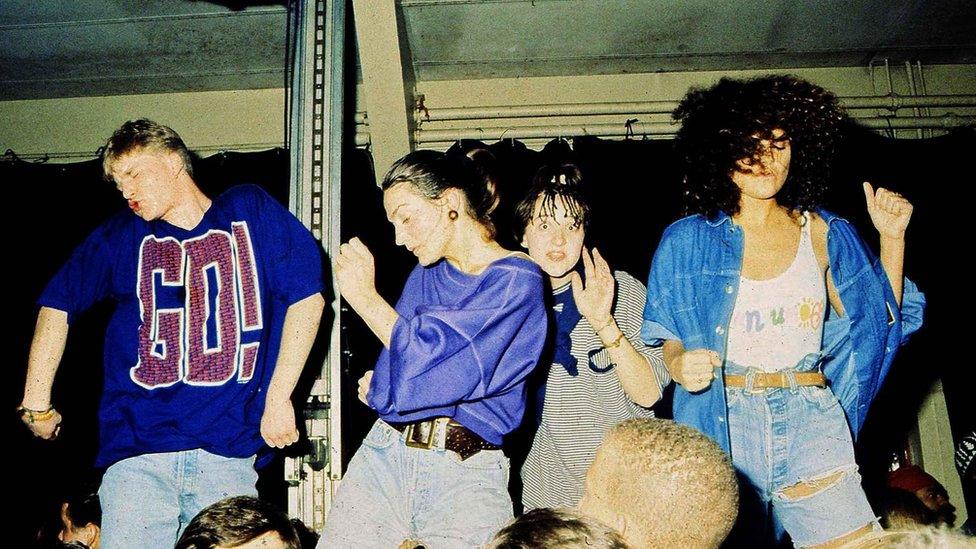
A rare colour photo from the 1989 rave scene - again at The Centre in Slough. "I hated carrying around this camera, because I wanted to rave, but it got me in free because the organisers wanted me to take images of their events for their flyers," said Watson
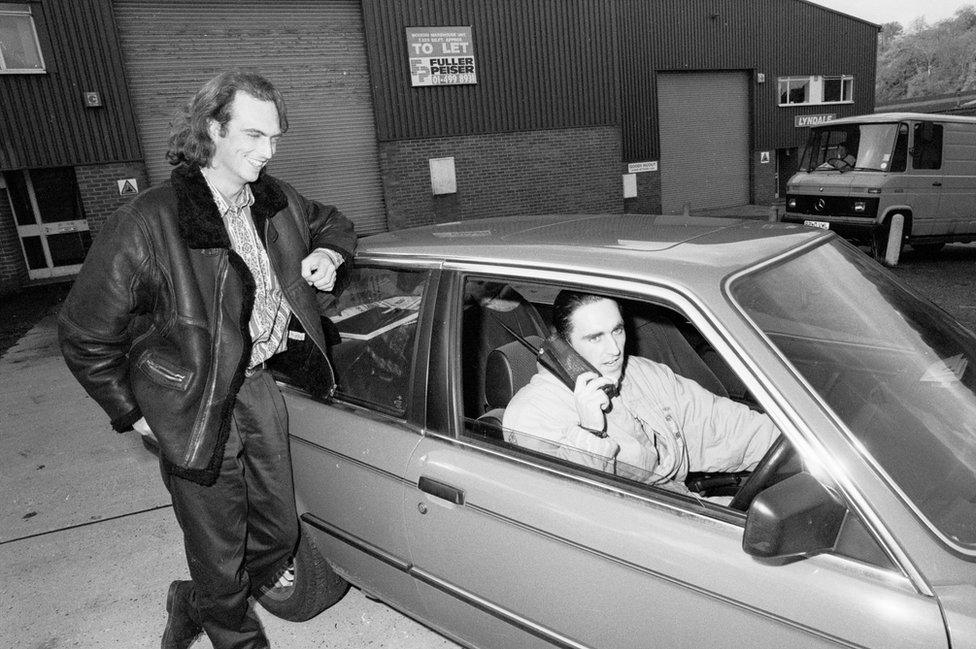
High Wycombe area rave organisers Mark Rickson and Gary Ellis. "I love this photo for the size of the mobile phone," said Watson
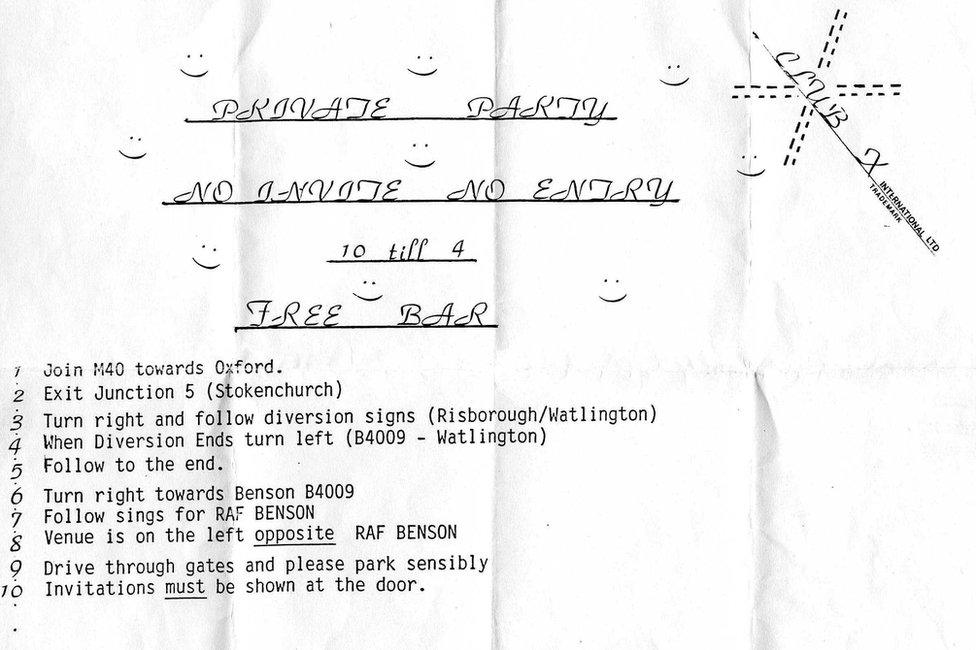
The locations of raves were often kept secret until the night and attendees had to call special phone numbers to get directions, although some tickets came with instructions, such as this one Gavin Watson went to in Oxfordshire

Police successfully shut down a rave at Colnbrook, near Slough

Watson attended and photographed the Freedom To Party rally in London in March 1990, which campaigned against government moves to restrict unlicensed dance events
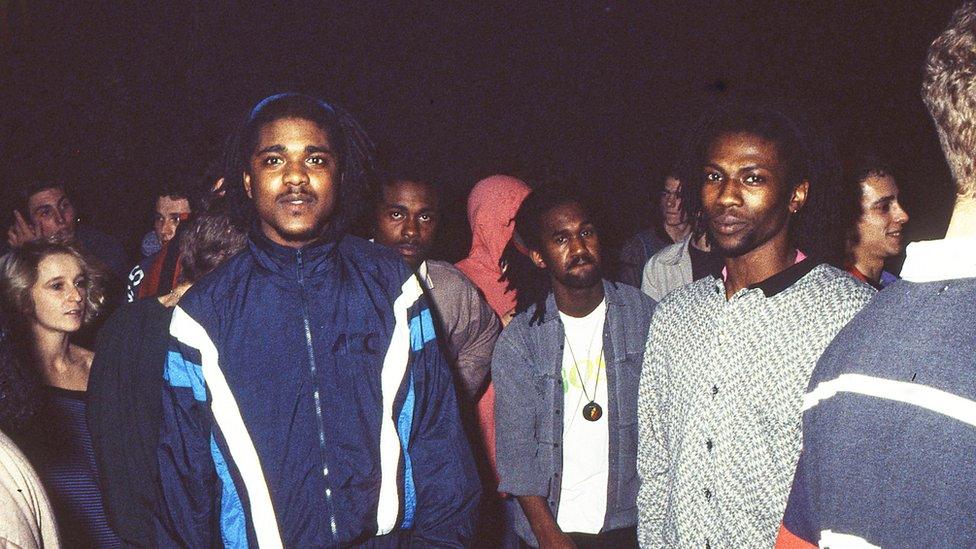
A photograph that is due to appear in Gavin Watson's forthcoming book Raving Too - a follow-up to Raving '89
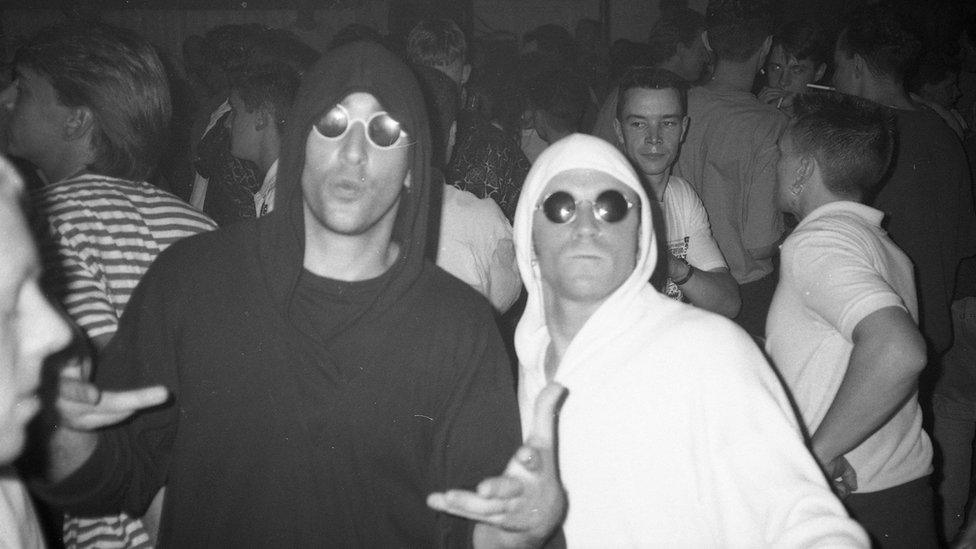
Gavin and Neville Watson raving in 1989. "I did used to feel nostalgic for the 1989 period, but over time I've changed my mind because I think it killed all the differences that made things interesting," said Watson
Burton, who is staging a webcast talk-through version, external of Harold Pinter's The Dwarfs on 25 September, said he and Watson had not idea whether their play would be staged before a live audience due to ongoing coronavirus restrictions.
"It's a challenging time to mount a play - maybe we'll do it online," he said.

Find BBC News: East of England on Facebook, external, Instagram, external and Twitter, external. If you have a story suggestion email eastofenglandnews@bbc.co.uk, external
- Published6 December 2013
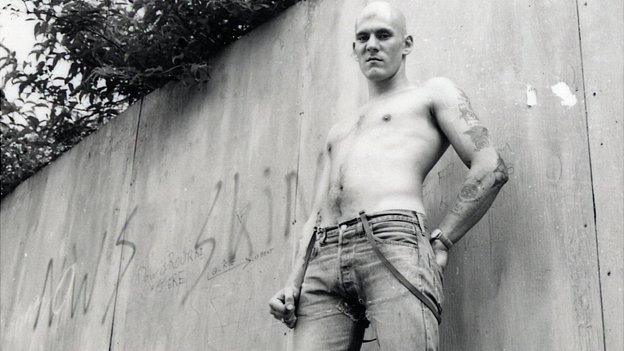
- Published23 July 2012
